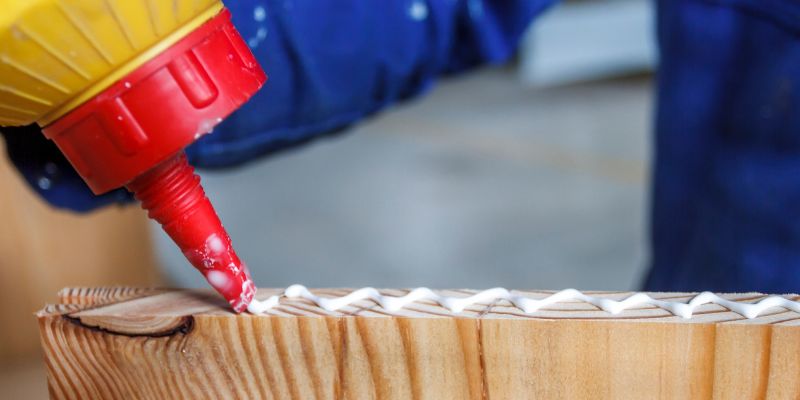How to Choose the Right Adhesive for Your Woodworking Projects
Woodworking is a craft that demands not only skill and creativity but also the right materials to achieve high-quality results. Among these materials, adhesives are fundamental to creating strong joints that hold your wood pieces together over time. Selecting the correct adhesive can mean the difference between a masterpiece that lasts generations and a project that falls apart. Whether you’re an amateur hobbyist or a seasoned professional, understanding which glue to use for your specific woodworking task is critical.
In this article, we will explore the various types of woodworking adhesives available today, their unique properties, and how to choose the best one based on your project requirements. We will also cover practical tips for applying adhesives correctly and maintaining your materials for maximum durability.
Understanding Why Selecting the Right Woodworking Adhesive Is Critical for Your Project’s Success
Choosing the right adhesive isn’t simply a matter of grabbing the first glue you see. Different wood species, project types, and environmental conditions all affect how adhesives perform. The ideal adhesive will provide a bond that is stronger than the wood itself, resistant to water, heat, and other stressors, and compatible with your finishing process.
Incorrect adhesive choices can cause issues such as weak joints, surface staining, difficulty in sanding or painting, and even permanent damage to delicate wood. By knowing what to consider before you buy, you set your woodworking projects up for success from the start.
Exploring the Various Types of Woodworking Adhesives and Their Specific Uses
Woodworkers today have a wide variety of adhesives to choose from, each designed for different applications and environments. Here are the main types you’ll encounter:
Polyvinyl Acetate Glue (PVA) and Its Role as the Go-To Adhesive for Everyday Woodworking Tasks
PVA glue, often known as white glue or carpenter’s glue, is the most common adhesive used in woodworking. It is user-friendly, non-toxic, dries clear, and is ideal for indoor projects with minimal water exposure. Its versatility makes it the favorite for furniture making, cabinetry, and small repairs.
Advantages:
- Easy cleanup with water before drying
- Clear drying and excellent sandability
- Affordable and widely available in hardware stores
Limitations:
- Not water-resistant unless specifically labeled as exterior or waterproof
- Unsuitable for outdoor or high-moisture applications without additional protection
Why Polyurethane Glue Is Ideal for Heavy-Duty and Outdoor Woodworking Projects Due to Its Expanding and Waterproof Properties
Polyurethane glue offers strong, waterproof bonding and works well in applications that require filling gaps between uneven surfaces. It requires moisture to cure and expands as it dries, creating a tight seal ideal for outdoor furniture, decks, and boatbuilding.
Advantages:
- Highly water- and heat-resistant
- Expands to fill gaps, improving bond integrity
- Bonds wood to other materials such as metal and plastic
Drawbacks:
- Requires careful moisture control during application
- Can be messy due to expansion
- Needs protective gloves and ventilation due to chemical nature
Epoxy Resin Adhesives Provide Superior Strength and Durability for Complex and Structural Woodworking Projects
Epoxy adhesives consist of a resin and hardener mixed prior to use. They offer extremely strong, waterproof bonds suitable for structural joints, repairs, and projects exposed to harsh environments. Epoxy can also fill large gaps and reinforce weak or damaged wood.
Benefits:
- Very high strength and chemical resistance
- Excellent gap-filling capabilities
- Can be used on a variety of materials beyond wood
Challenges:
- Requires precise mixing and application
- Longer curing time compared to other adhesives
- Can be difficult to sand and finish
When to Use Cyanoacrylate (Super Glue) for Quick Repairs and Small Woodworking Joints
Super glue is a fast-drying adhesive that works best for quick fixes and small joints. It bonds instantly but tends to be brittle, making it unsuitable for load-bearing applications.
Pros:
- Extremely fast bonding time
- Convenient for minor repairs and tight fits
- Works on various surfaces
Cons:
- Brittle bond unsuitable for structural strength
- Very short open time limits adjustments
- Can leave residue or discolor wood surfaces
Traditional Hide Glue and Its Unique Advantages for Antique Furniture Restoration and Fine Woodworking
Hide glue is a traditional adhesive derived from animal collagen. It offers a strong initial bond that can be reversed with heat and moisture, making it favored by restorers and fine woodworkers who may need to disassemble joints without damage.
Advantages:
- Reversible with heat, enabling repairs and refinishing
- Excellent for delicate or antique wood
- Creates a strong initial tack
Disadvantages:
- Requires heating equipment to apply
- Limited shelf life and less water resistance
- Not practical for outdoor use
Contact Cement for Laminates and Veneers and Its Ability to Create Instant, Flexible Bonds
Contact cement is ideal for bonding large surfaces such as veneers and laminates. Both surfaces are coated and allowed to dry before pressing together, creating an instant, flexible bond.
Benefits:
- Instantaneous bonding on contact
- Excellent for large surface area bonding
- Remains flexible after curing
Drawbacks:
- Strong fumes require ventilation and protective gear
- Requires precision as repositioning after contact is impossible
- Not suitable for small or complex joints
Important Factors to Keep in Mind When Deciding on the Best Adhesive for Your Specific Woodworking Project
Assessing the Strength Requirements for Your Project’s Wood Joints
Some projects require adhesives that create permanent, load-bearing joints, while others may only need surface bonding. Heavy furniture and outdoor items require stronger, waterproof glues, whereas indoor decorative pieces may only need standard PVA glue.
Considering the Impact of Water Exposure and Temperature on Adhesive Choice
If your project will be exposed to moisture or heat, such as outdoor benches or kitchen cabinets, it’s essential to use water- and heat-resistant adhesives. Polyurethane and epoxy are top choices for these conditions.
How Open Time and Clamping Time Affect Your Workflow and Assembly Process
Open time is the window in which the glue remains workable before setting. Clamping time is the duration you must hold pieces firmly together for the glue to cure properly. Complex assemblies benefit from longer open times, giving you time to align pieces.
Evaluating How Adhesive Properties Affect Sanding, Painting, and Finishing
Some glues dry hard and smooth, allowing for easy sanding and finishing (e.g., PVA). Others, like epoxy, can be more challenging to sand and may require additional finishing steps.
Understanding Safety Precautions and Toxicity Levels of Different Woodworking Adhesives
While many adhesives are safe to use indoors, some require ventilation due to VOCs or strong odors (e.g., contact cement and polyurethane). Always follow manufacturer safety instructions.
Matching the Right Adhesive Type to Common Woodworking Projects You May Undertake
- Furniture Making: PVA glue is standard for joints; epoxy works well for repair and reinforcement.
- Outdoor Woodworking: Polyurethane glue or waterproof PVA is essential for weather resistance.
- Cabinetry and Fine Woodworking: PVA or hide glue offers clean joints and easy finishing.
- Veneer and Laminate Application: Contact cement is the adhesive of choice for large flat surfaces.
- Small Repairs: Cyanoacrylate (super glue) is perfect for quick fixes.
Step-By-Step Guide to Properly Applying Wood Glue to Achieve the Strongest and Cleanest Joints
Preparation and technique are as important as adhesive choice in woodworking. Here’s how to maximize your glue’s performance:
- Prepare your wood surfaces by sanding and cleaning away dust or grease.
- Apply glue evenly using a brush or nozzle to ensure full coverage.
- Press the pieces together and clamp firmly to maintain contact during curing.
- Remove excess glue immediately with a damp cloth to avoid staining or rough finishes.
- Allow the glue to cure for the recommended time before sanding or handling.
Essential Tips for Storing and Maintaining Wood Adhesives to Ensure Longevity and Effectiveness
Proper storage extends adhesive shelf life. Keep containers sealed tightly, store in cool, dry places away from direct sunlight, and avoid freezing temperatures, especially for water-based glues. Always check expiration dates and discard old glue to prevent weak bonds.
How to Identify and Fix Common Problems That Can Occur When Using Woodworking Adhesives
If your joints are weak or your glue isn’t drying properly, troubleshoot these issues:
- Poor adhesion may be due to dirty or oily surfaces—always prep thoroughly.
- Glue stains can be minimized by wiping excess glue immediately.
- Slow curing times may be caused by cold or damp conditions; warm and dry environments speed up bonding.
Considering Environmental Impact and Choosing Eco-Friendly Adhesives for Sustainable Woodworking Practices
Many adhesives contain chemicals harmful to the environment. Low-VOC, non-toxic, and biodegradable options are becoming available, enabling woodworkers to reduce their ecological footprint without sacrificing performance.
Final Thoughts on How to Confidently Select the Best Adhesive for Your Woodworking Projects to Achieve Professional Results Choosing the perfect adhesive involves balancing strength, moisture resistance, workability, and finishing needs. By understanding the properties of different adhesives and how they relate to your project, you’ll make choices that enhance durability and beauty. Take your time, prepare carefully, and apply your glue with precision — and your woodworking projects will be bonded to last a lifetime.

